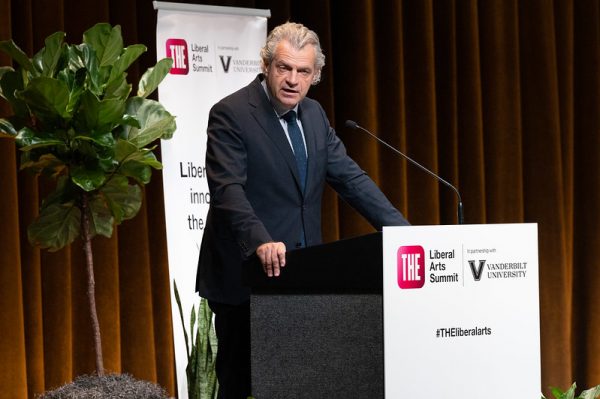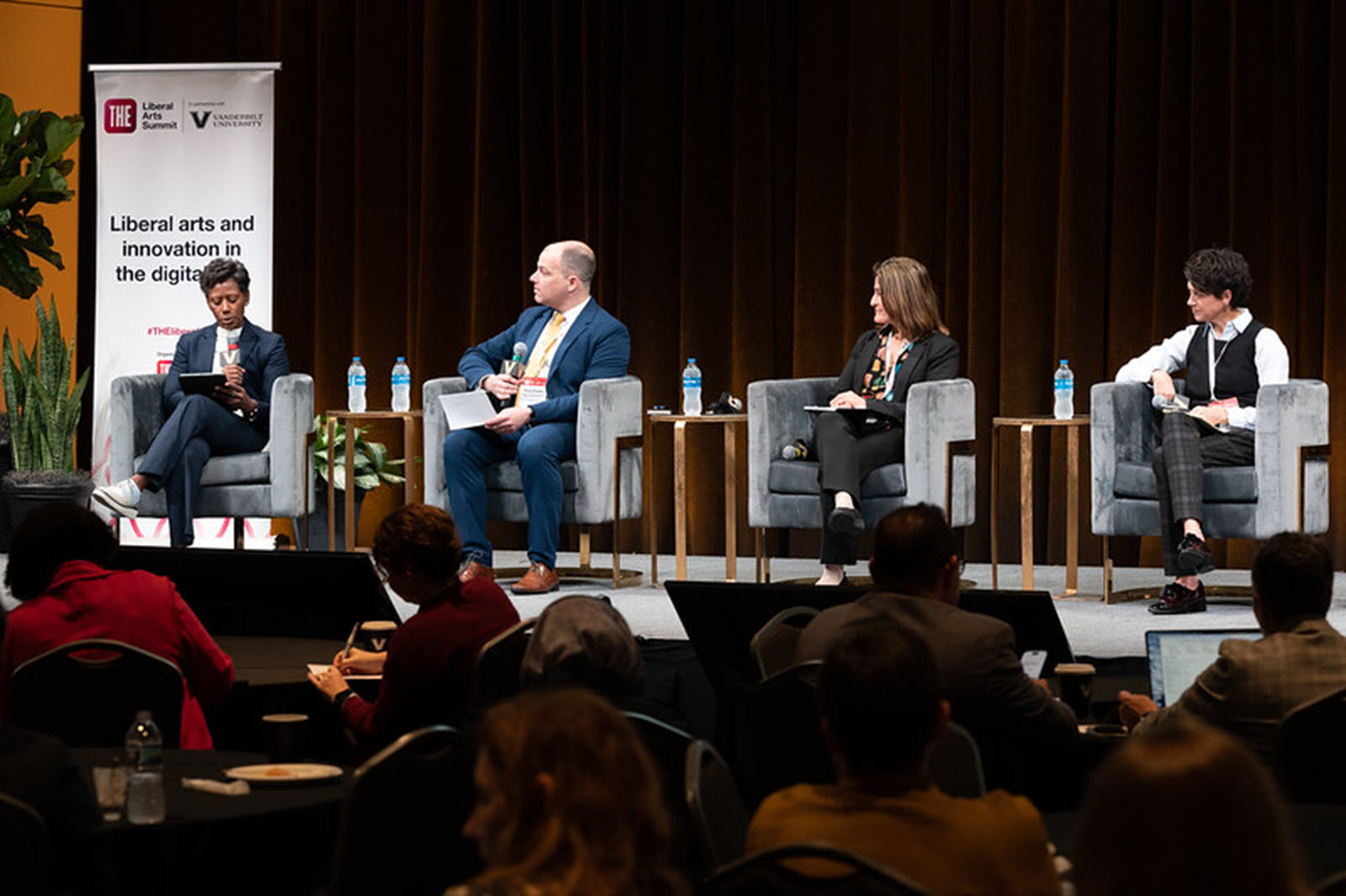“We must look beyond outdated models, with their inherent divisions among disciplines, and offer all students an approach that is new and holistic, and as multifaceted as the world they’re going to live in,” Vanderbilt Chancellor Daniel Diermeier urged in remarks that set the tone for THE Liberal Arts Summit.

Vanderbilt University welcomed more than 220 academic leaders from 10 countries to address the future of liberal arts education. The gathering brought together representatives from the United States, India, Indonesia, Egypt, Sudan, Rwanda, Canada, the United Kingdom, Spain and Germany, establishing Nashville as a focal point for global education innovation.
GLOBAL VOICES FOR EDUCATION
The summit opened with keynote addresses from Diermeier and Lynn Pasquerella, president of the American Association of Colleges and Universities. Pasquerella framed the urgency of the moment, describing it as “a moment of enormity for higher education, one that poses an existential threat to the distinctively American tradition of liberal education and to our nation’s historic mission of educating for democracy.”
Senior leaders from institutions including the University of Chicago, Duke, Penn State, Regent’s University of London and William & Mary engaged in dynamic discussions focused on digital innovation in learning and interdisciplinary approaches to global challenges. The range of perspectives highlighted how educational challenges and opportunities resonate across geographical boundaries.
STRATEGIES FOR WIDE IMPACT
Attendees shared their concrete strategies for strengthening liberal arts education globally to nurture and create tomorrow’s leaders. The summit identified three key areas for action:
First, institutions must articulate their value more effectively to external stakeholders. “Higher education is telling the same stories over and over and expecting different results,” said Vanessa Beasley, president of Trinity University. “We must do better, or the decline in trust in our institutions will continue.”
Second, universities should leverage their next generation of faculty as change agents. “They have new ways of teaching and getting students out of the classroom into those spaces of experiential learning,” said Kathleen Canning, dean of Rice University’s School of Humanities.
Third, institutions must integrate technology thoughtfully while preserving creativity. “The question that we should be asking ourselves is how liberal arts and technology work together in the larger world so that we can establish interconnected relevance,” said Carleton College President Alison Byerly.
INTEGRATION FOR TECH, LIBERAL ARTS
Summit sessions demonstrated practical approaches to integrating technology with liberal arts education. A keynote session, “Liberal Arts Education in AI Innovation and Governance,” explored how liberal arts principles can address moral and societal concerns around artificial intelligence while bridging the gap between STEM and humanities disciplines.
Summit participants shared innovative teaching methods, including flipped classrooms and experiential learning approaches, that leverage technology. These practical applications showed how digital tools can enhance student engagement while maintaining the core strengths of liberal arts education.
Keynote speaker Ian Bogost, a professor at Washington University in St. Louis, highlighted the global surge in computer science education, noting that the number of undergraduate computer science majors at U.S. universities tripled in the decade after 2005. This trend mirrors worldwide shifts from humanities to STEM degrees.
VANDERBILT LEADS THE WAY
Vanderbilt showcased several initiatives demonstrating its commitment to integrating liberal arts and technology. The university’s recently announced College of Connected Computing exemplifies its “computing for all” approach, designed to serve as a resource for students and faculty across all disciplines.
The university also highlighted innovative cross-disciplinary projects, including a collaboration between the Vanderbilt Institute of National Security and Holly Tucker, professor of French and the Mellon Foundation Chair in the Humanities, which gave humanities students experience researching cybersecurity threats. Additionally, Jane Landers, the Gertrude Conaway Vanderbilt Professor of History, and Steve Wernke, professor and chair of anthropology, talked about how they are leveraging AI to help connect the dots in their data and dramatically increase the scope of their projects.
Diermeier pointed to early signs of success with the integrated approach, noting that more than a quarter of Vanderbilt’s recent graduating class were double majors earning cross-disciplinary bachelor’s degrees. “In a sense, this convergence of technology and the liberal arts returns us to the dawn of modern science, when the line between art and science was more fluid,” Diermeier concluded. “If we can empower that same kind of uncontained curiosity in our students, we can only guess at the marvels they will create.”




